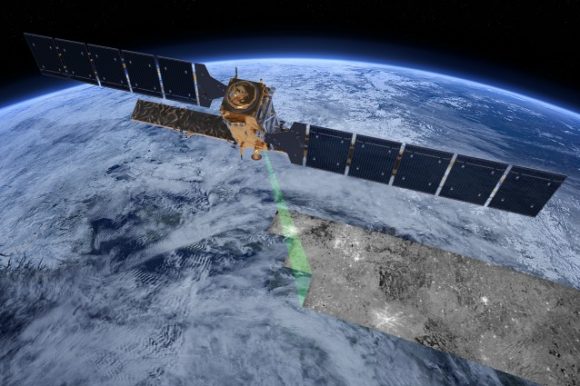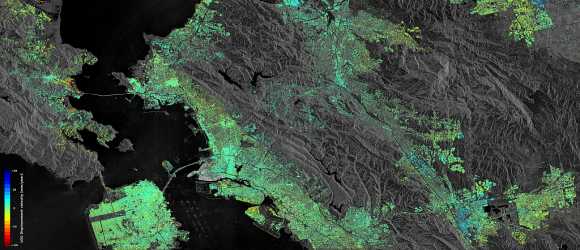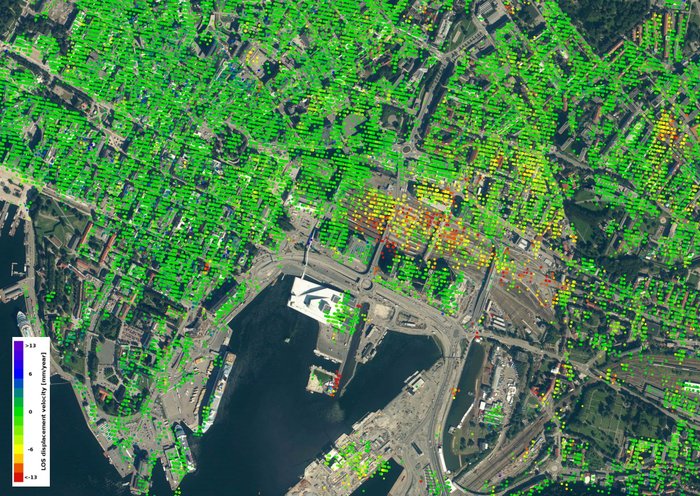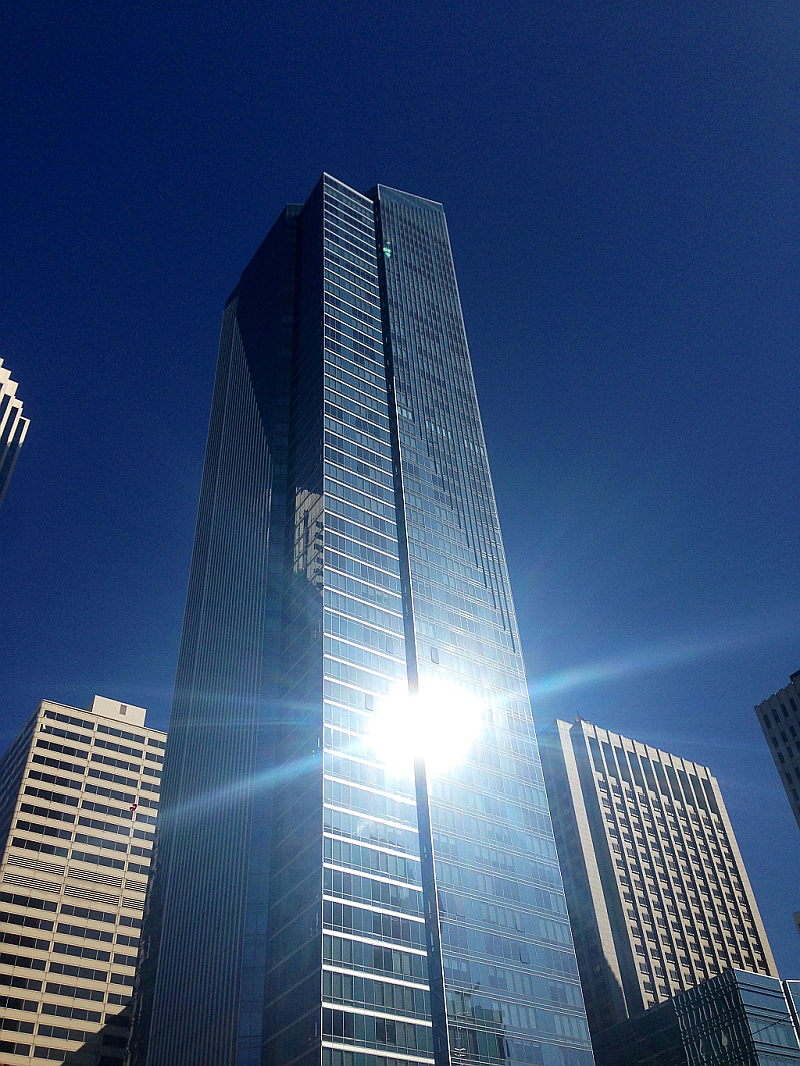The Millennium Tower is a luxury skyscraper in San Francisco. It has been sinking and tilting since it’s construction 8 years ago. In fact, the 58 story building has sunk 8 inches, and tilted at least 2 inches. San Francisco is experiencing a building boom, and planners and politicians want to know why the Millennium Tower is having these problems.
Now they’re getting a little help from space.
The European Space Agency’s (ESA) Copernicus Sentinel-1 satellites have trained their radar on San Francisco. They’ve found that the Millennium Tower is sinking, or subsiding, at the alarming rate of almost 50 mm per year. Although the exact cause is not yet known for sure, it’s suspected that the building’s supporting piles are not resting on solid bedrock.

The Sentinel-1 satellites are part of the ESA’s Copernicus Program. There are two of the satellites in operation, and two more are on the way. They employ Synthetic Aperture Radar to provide continuous imagery during the day, during the night, and through any kind of weather.
The satellites have several applications:
- Monitoring sea ice in the arctic
- Monitoring the arctic environment and other marine environments
- Monitoring land surface motion
- Mapping land surfaces, including forest, water, and soil
- Mapping in support of humanitarian aid in crisis situations
Though the Sentinels were not specifically designed to monitor buildings, they’re actually pretty good at it. Buildings like the Millennium Tower are especially good at reflecting radar. When multiple passes are made with the satellites, they provide a very accurate measurement of ground subsidence.

The Millennium Tower is not the only thing in San Francisco Bay Area that Sentinel-1 can see moving. It’s also spotted movement in buildings along the Hayward Fault, an area prone to earthquakes, and the sinking of reclaimed land in San Rafael Bay. It’s also spotted some rising land near the city of Pleasanton. The recent replenishing of groundwater is thought to be the cause of the rising land.
Now other parts of the world, especially in Europe, are poised to benefit from Sentinel-1’s newfound prowess at reading the ground. In Oslo, Norway, the train station is built on reclaimed land. Newer buildings have proper foundations right on solid bedrock, but the older parts of the station are experiencing severe subsidence.

John Dehls is from the Geological Survey of Norway. He had this to say about Sentinel: “Experience and knowledge gained within the ESA’s Scientific Exploitation of Operational Missions programme give us strong confidence that Sentinel-1 will be a highly versatile and reliable platform for operational deformation monitoring in Norway, and worldwide.”
As for the Millennium Tower in San Francisco, the problems continue. The developer of the building is blaming the problems on the construction of a new transit center for the city. But the agency in charge of that, the Transbay Joint Powers Authority, denies that they are at fault. They blame the developer’s poor structural design, saying that it’s not properly built on bedrock.
Now, the whole thing is before the courts. A $500 million class-action lawsuit has been filed on behalf of the residents, against the developer, the transit authority, and other parties.
It’s a good bet that data from the Sentinel satellites will be part of the evidence in that lawsuit.

